SUMMER SCHOOL

AA Architectural Association School of Architecture, London
University of Basel, Urban Studies, MA Critical Urbanisms
THE MATERIALITY OF ART FAIRS
AAVS BASEL / ART BASEL
13-23 June 2023
Hosted by the Architectural Association Visiting School program in collaboration with the Urban Studies division of the University of Basel.
One of the major commonalities of international art fairs like Art Basel, Frieze London, and The Armory Show in New York is the gigantic mobilization of materials and bodies that, from disparate parts of the globe, travel to aggregate in one place (for a week or so) before moving on to a new destination. It’s an endless cycle of assembling and disassembling the material and the social components that constitute it. Through the lens of materiality through which these events unfold, this summer school will take a critical look at world fairs, expos, biennials, and triennials and the works of artists, architects, urbanists, curators, and institutions involved in them. This will be done according to a double register of materialism: one inspired by theories and methodologies of the material turn in the social sciences, and the other one inscribed into the market logics of material consumption and accumulation that foreground phenomena of extractive capitalism and exclusionary urbanism. On the occasion of Art Basel 2023, the summer school will provide the students with visitor passes and guided tours of the exhibitions and will ask them to identify and visualize under-observed social and urban phenomena linked to the fair. After the visits, the students will be challenged to reimagine the art fair through project-based urban interventions that hinge on the material artifacts that constitute them—from artworks to publications, exhibition spaces, museum buildings, and the cities that host them.
AA School of Architecture
MA Critical Urbanism-University of Basel
MA Critical Urbanisms - Instagram
Read More About the Summer School
CLIMATE URBANISM
THE ART FAIR BOOM IS CHANGING THE WAY THE CLIMATE DOES WITH THE WORLD
THE NUMBER OF ART FAIRS HAS EXPLODED, AND NOW EVERY CITY WANTS TO GET IN ON THE ACT, BUT IS IT TOLERABLE FOR THE ENVIRONMENT?
The art market that’s now globalized and art fairs where people are increasingly rushed and want to see a maximum number of works in a minimum amount of time. Furthermore, this new model pushes cities to transform these events into a global crisis for climate change.
This project offers a critical exploration of art fairs, with a possible extension to biennials, triennials, and exhibitions, and the art world through the lens of climate change. It aims to analyze the social and environmental phenomena provoked by the mobilization of art and people from various parts of the globe, coming together for a short period of time around these mega-events.
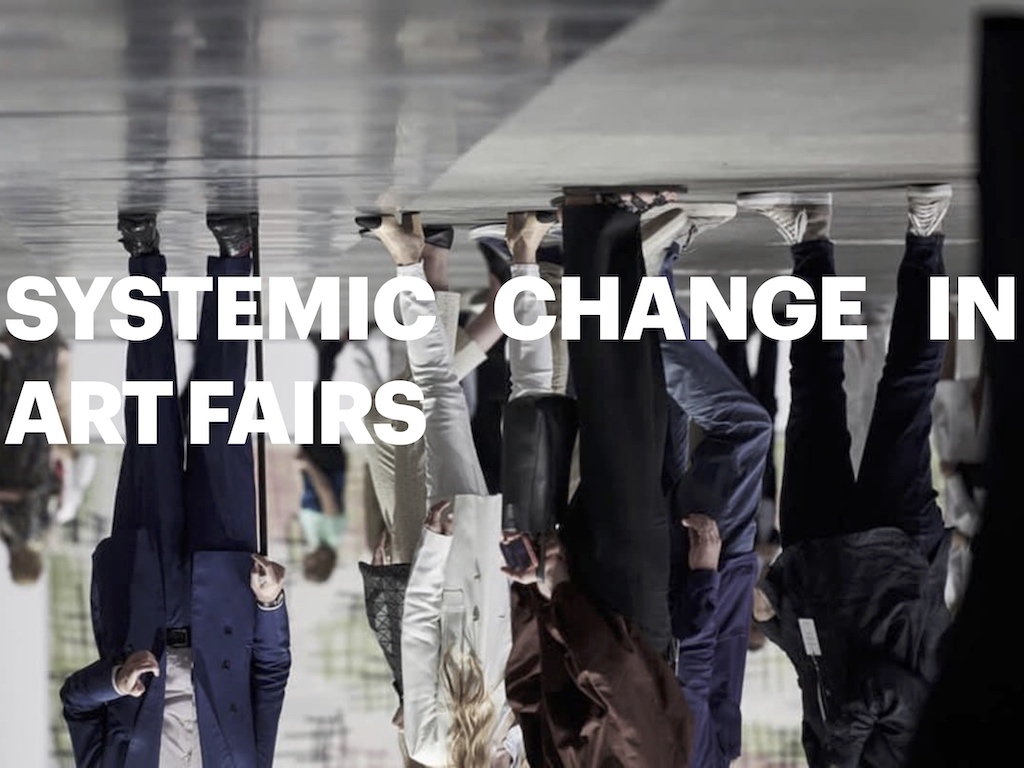
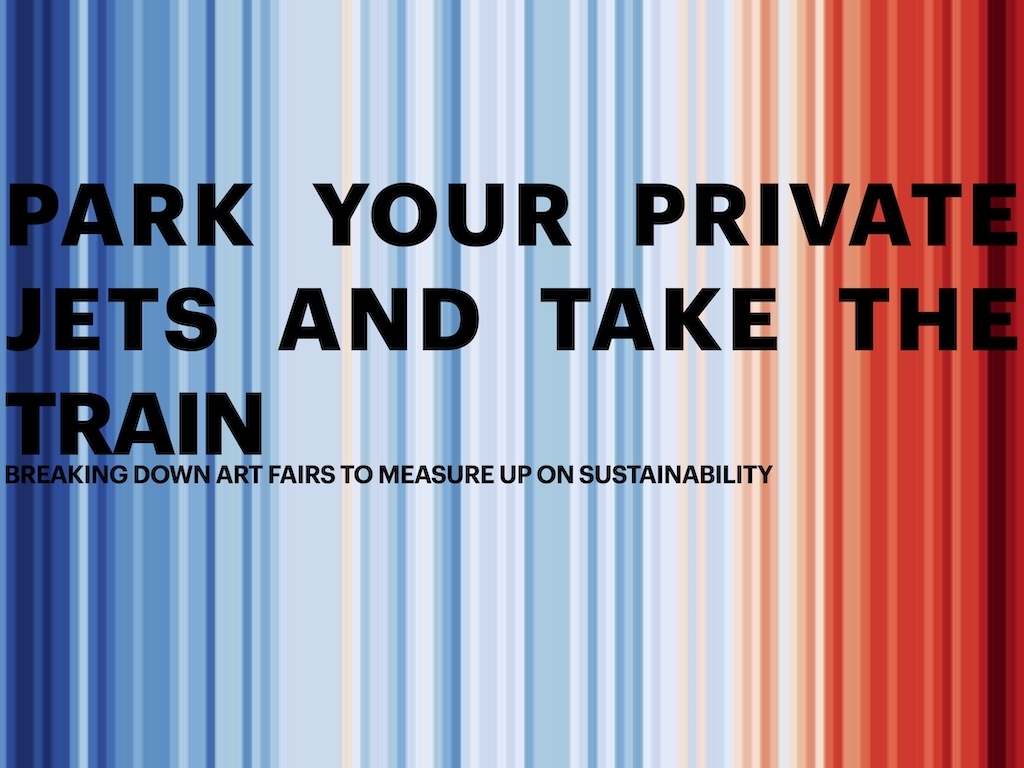
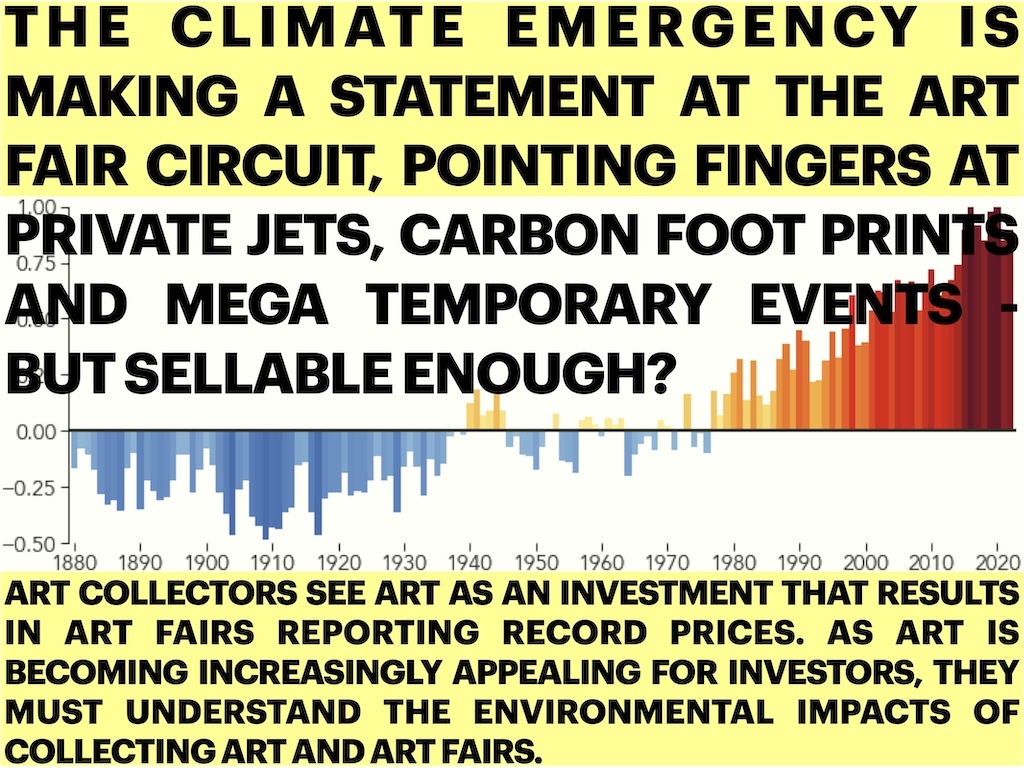
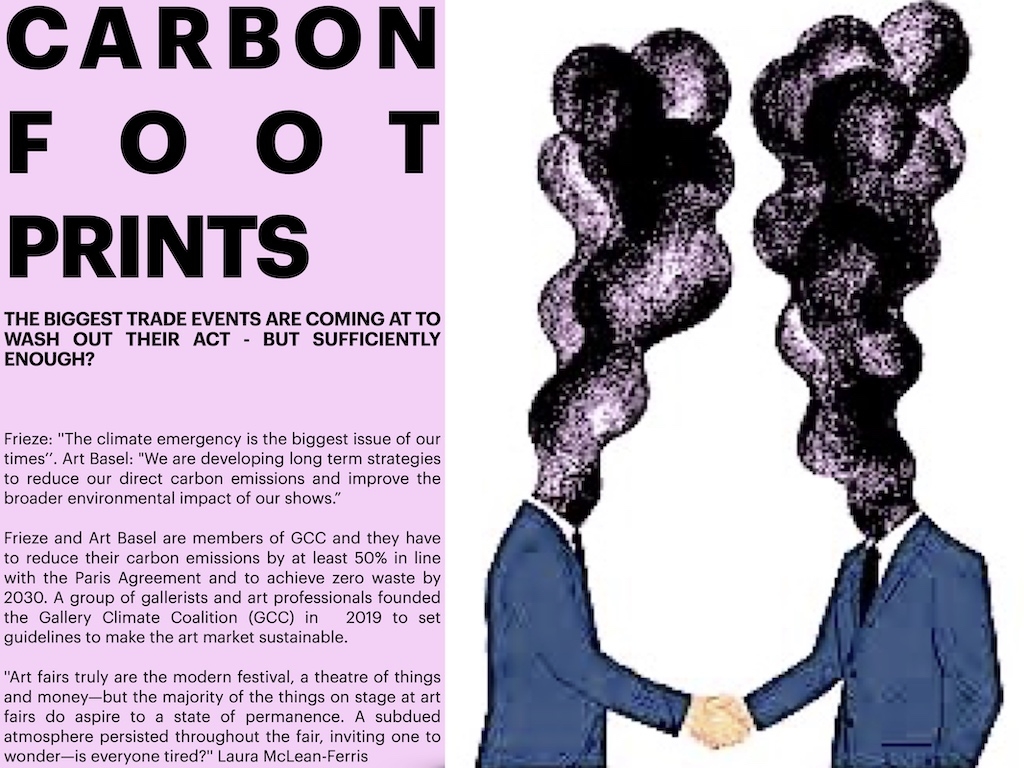
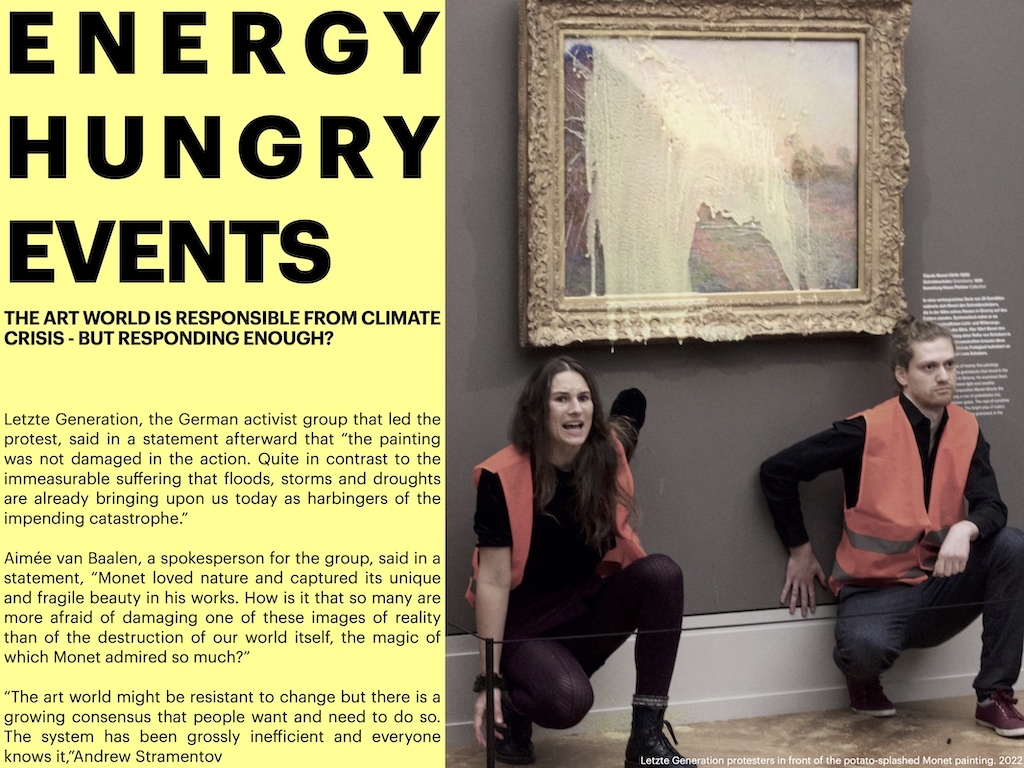
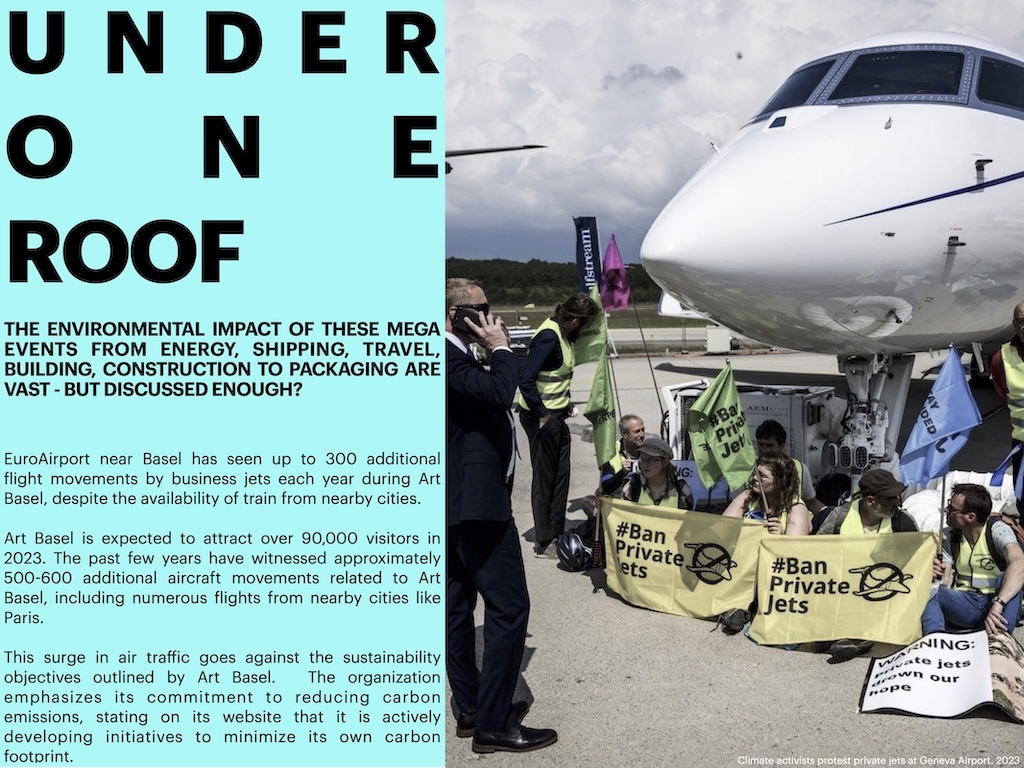
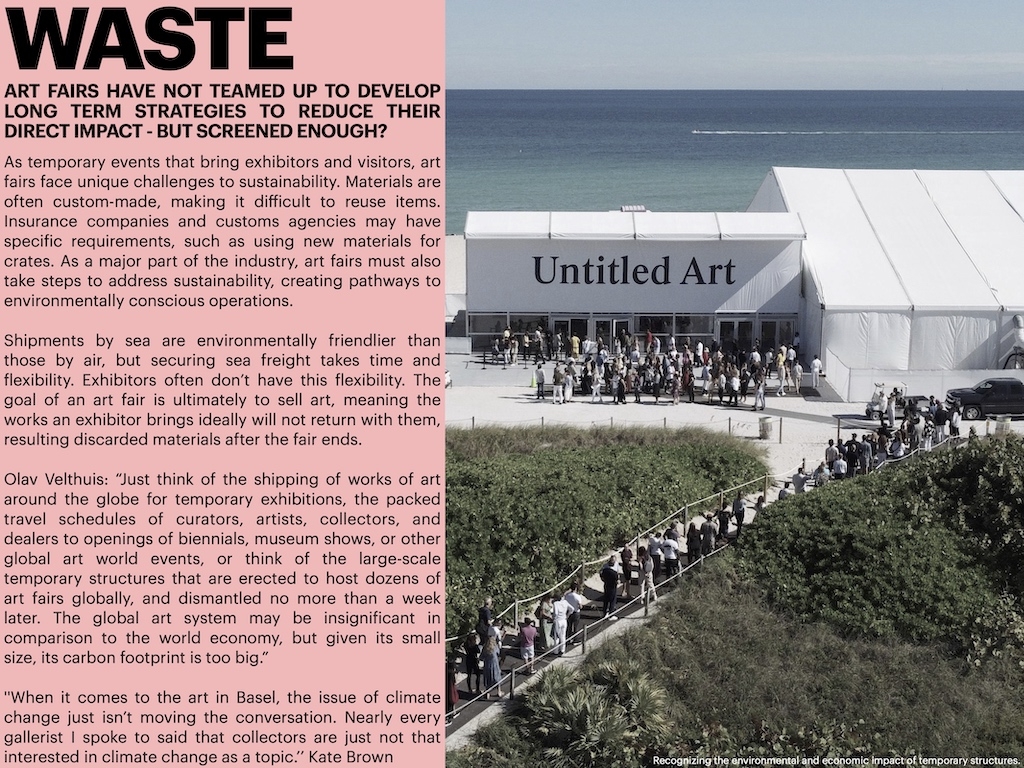

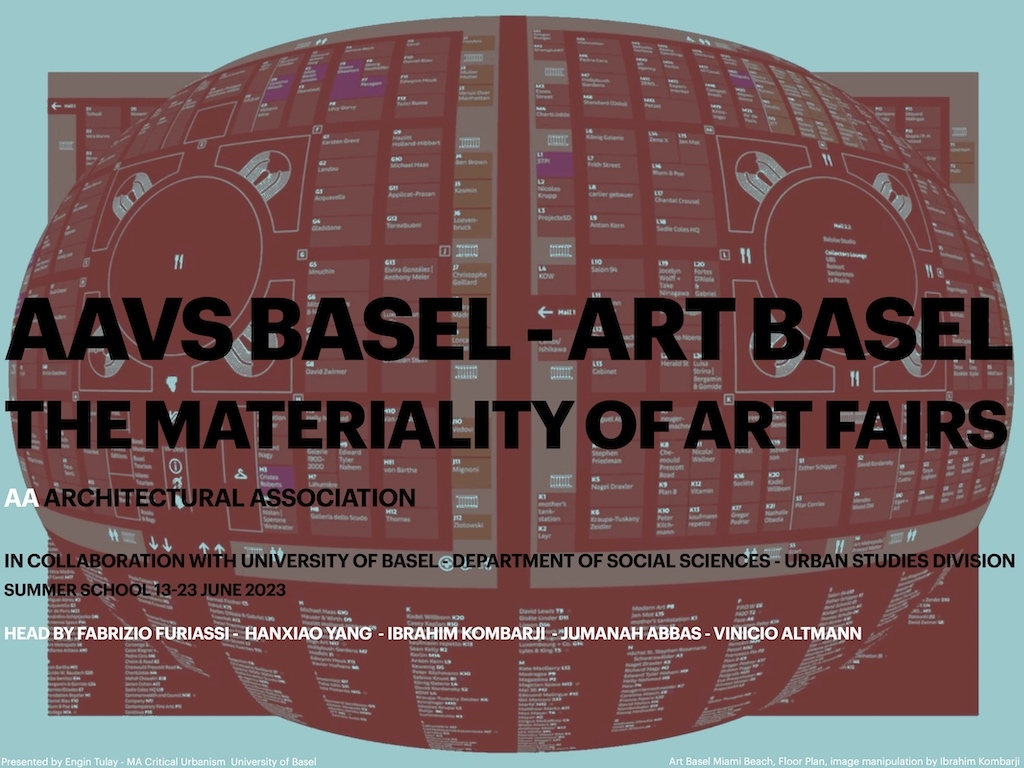
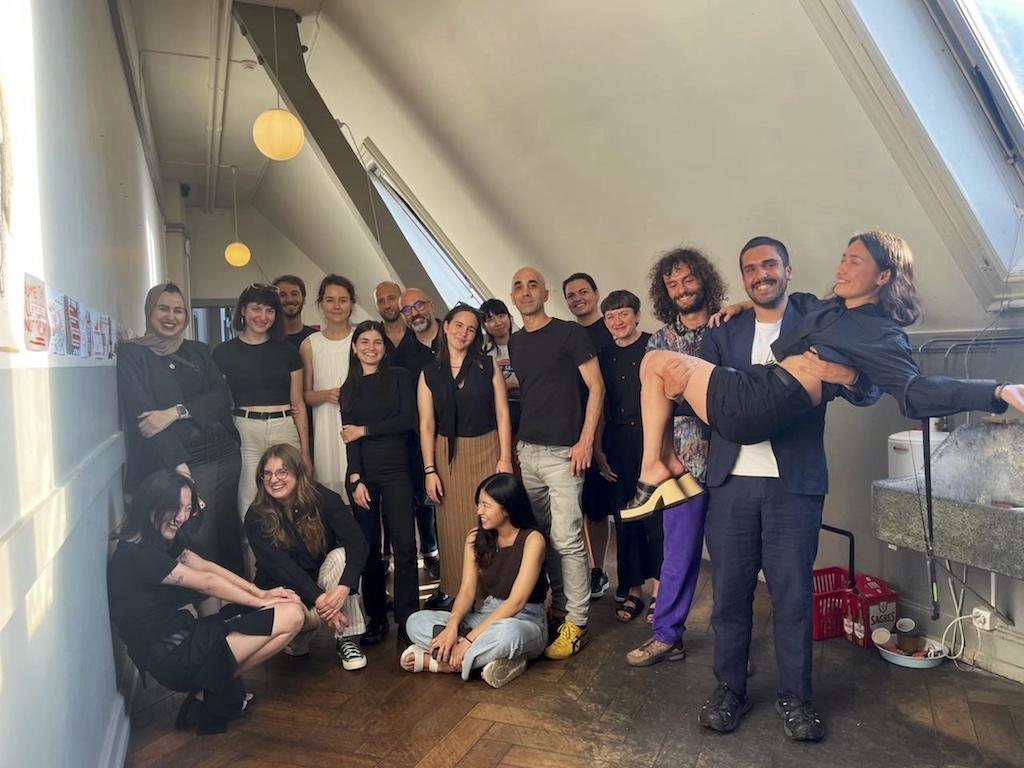
Programme Head
Fabrizio Furiassi
Admin and Teaching Assistant
Vinicio Altmann
Tutors
Jumanah Abbas
Aleksandra Budaeva
Katharina Ehrl
Ibrahim Kombarji
Ekaterina Wittwer-Nuzhdina
Hanxiao Yang
SYSTEMETIC CHANGE IN ART FAIRS
ADDRESSING THE CONTROVERSIAL TOPIC OF ART
Park your private jets and take the train
Breaking Down Art Fairs to Measure Up on Sustainability
The climate emergency is making a statement at the art fair circuit, pointing fingers at private jets, carbon foot prints, and mega temporary events—but is it sellable enough?
Art collectors see art as an investment, which results in art fairs reporting record prices. Art is becoming increasingly appealing for investors, yet they must understand the environmental impacts of collecting art and art fairs.
Carbon Footprints
The biggest trade events are coming to wash out their act, but sufficiently enough?
Frieze: ''The climate emergency is the biggest issue of our time''. Art Basel: "We are developing long-term strategies to reduce our direct carbon emissions and improve the broader environmental impact of our shows.”
Frieze and Art Basel are members of the GCC, and they have to reduce their carbon emissions by at least 50% in line with the Paris Agreement and achieve zero waste by 2030. A group of gallerists and art professionals founded the Gallery Climate Coalition (GCC) in 2019 to set guidelines to make the
art market sustainable.
''Art fairs truly are the modern festival, a theater of things and money—but the majority of the things on stage at art fairs do aspire to a state of permanence. A subdued atmosphere persisted throughout the fair, inviting one to wonder—is everyone tired?'' Laura McLean-Ferris
Energy-hungry events
The art world is responsible for the climate crisis, but is it responding enough?
Letzte Generation, the German activist group that led the protest, said in a statement afterward that “the painting was not damaged in the action. Quite in contrast to the immeasurable suffering that floods, storms, and droughts are already bringing upon us today as harbingers of the impending catastrophe.”
Aimée van Baalen, a spokesperson for the group, said in a statement, “Monet loved nature and captured its unique and fragile beauty in his works. How is it that so many are more afraid of damaging one of these images of reality than of the destruction of our world itself, the magic of which Monet admired so much?”
“The art world might be resistant to change, but there is a growing consensus that people want and need to do so. The system has been grossly inefficient, and everyone knows it. Andrew Stramentov
Under one roof
The environmental impact of these mega-events, from energy, shipping, travel, building, construction, and packaging, is vast, but has not been discussed enough.
EuroAirport near Basel has seen up to 300 additional flight movements by business jets each year during Art Basel, despite the availability of trains from nearby cities.
Art Basel is expected to attract over 90,000 visitors in 2023. The past few years have witnessed approximately 500–600 additional aircraft movements related to Art Basel, including numerous flights from nearby cities like Paris.
This surge in air traffic goes against the sustainability objectives outlined by Art Basel. The organization emphasizes its commitment to reducing carbon emissions, stating on its website that it is actively developing initiatives to minimize its own carbon footprint.
Waste
ART fairs have not teamed up to develop long-term strategies to reduce their direct impact, but are they screened enough?
As temporary events that bring exhibitors and visitors together, art fairs face unique challenges to sustainability. Materials are often custom-made, making it difficult to reuse items. Insurance companies and customs agencies may have specific requirements, such as using new materials for crates. As a major part of the industry, art fairs must also take steps to address sustainability, creating pathways to environmentally conscious operations.
Shipments by sea are environmentally friendlier than those by air, but securing sea freight takes time and flexibility. Exhibitors often don’t have this flexibility. The goal of an art fair is ultimately to sell art, meaning the works an exhibitor brings ideally will not return with them, resulting in discarded materials after the fair ends.
Olav Velthuis: “Just think of the shipping of works of art around the globe for temporary exhibitions, the packed travel schedules of curators, artists, collectors, and dealers to openings of biennials, museum shows, or other global art world events, or think of the large-scale temporary structures that are erected to host dozens of art fairs globally and dismantled no more than a week later. The global art system may be insignificant in comparison to the world economy, but given its small size, its carbon footprint is too big.”
''When it comes to the art in Basel, the issue of climate change just isn’t moving the conversation. Nearly every gallerist I spoke to said that collectors are just not that interested in climate change as a topic.’’ Kate Brown
Art is harmful
Artworks are generally produced using polluting materials; these can damage ecosystems and, in the long run, human health. But have you noticed enough?
The questions around the art world's carbon footprint are deeply uncomfortable for everyone. In fact, as visitors filed into Art Basel on the fair’s first public day, students and young artists staged a performance aimed at raising climate awareness outside the fair. The action was organized by the Paris Foundation, Art of Change 21. Professionals travel around the world multiple times per year for trips lasting under a week, and the whole supply-and-demand chain calls for art to be regularly shipped from A to B, usually as quickly as possible.
Dealer Kate MacGarry acknowledged that environmental art is not good business with this didactic stigma. At a panel as a part of Art Basel Conversations called “Talk About the Weather,” addressing how artists and institutions can use their platforms to deal with ecological issues, MacGarry elaborated. “Our current way of working is not sustainable, and we need to make changes. It would be nice to see Art Basel do more with this and their partner BMW only showcasing an electric car,” she added, referring to the company’s emissions-free range. “No one is exempt from this, and the wealthier you are, the more responsible you are—everyone at a place like Art Basel is complicit.”
We Need to Act, Setting the Agenda
Global warming is progressing rapidly. In March 2023, the temperature of the Earth had risen by 1.1 degrees compared to the pre-industrial era. The effects are already being felt: extreme weather, including major droughts, storms, and floods, around the world is causing immense damage, costing human lives, endangering biodiversity, and depleting drinking water. Some regions of the world, due to climate change, will become uninhabitable.
Art fairs must acknowledge the urgent need for action in relation to the global climate crisis and see it as their duty to take responsibility in relation to social, environmental, and economic issues and to make conscious contributions to sustainability efforts. With this in mind, they must work intensively to improve their ecological footprint. They still have a lot to learn and many more steps to take to communicate their goals, plans, and actions in a transparent way.
International art fairs must use their public platform to encourage others to find ways to take action as well for a more climate-friendly fair with their visitors and exhibitors. We must also create sustainability guidelines for exhibitors, continue to research additional ways to help their participation become more environmentally conscious, and also host special projects on environmental resilience.
RESOURCES
. Morgner, Christian (2014) The Evolution of the Art Fair. Gesis, Leibinz Institute of the Social Sciences
. Barragan, P. (2008) The Art Fair Age, Milan Charta
. Schultheis F. (20017) On the price of priceless goods. Sociological Observations on and around Art Basel. Journal for Art Market Studies Vol 1, No 1 (2017) . Schultheis F. (2015) Economy of Symbolic Goods: Ethnographical Explorations at the Art Basel. Documents 2017 Worshop Athenes
. Climate Activists Throw Mashed Potatoes at $110 M. Monet Painting in Germany from https://www.artnews.com/art-news/news/monet-meules-museum- barberini-climate-activists-protest-1234644090/
. 9 Artists Confronting Climate Change from https://www.riseart.com/article/2485/9-artists-confronting-climate-change
. Exhibition Next: The Future of Exhibition Design from https://digitalcommons.lsu.edu/cgi/viewcontent.cgi?article=3564&context=gradschool_theses
. Gallery Climate Coalition (GCC) from https://galleryclimatecoalition.org
. What makes an event a mega-event? Definitions and sizes from https://www.tandfonline.com/doi/pdf/10.1080/02614367.2014.993333
. What’s the future of Contemporary Art Fairs? from https://www.artsper-for-galleries.com/blog/what-s-the-future-of-contemporary-art-fairs
. From Antiquity to Modernity, How Art Fairs Became A Cultural Mainstay from https://magazine.artland.com/from-antiquity-to-modernity-how-art-fairs- became-a-cultural-mainstay/
. Art Fairs Model – Good or Bad? from https://www.artdex.com/art-fairs-model-good-or-bad/
. The Varying Art Fair Models from https://www.artmarket.guru/le-journal/market/art-fair-models/
. As the Art World Stomps Its Carbon Footprint Across London, Dealers and Frieze Are Innovating New Green Solutions from https://news.artnet.com/ market/frieze-london-environmental-initiatives-1666564
. Criticism Art Basel from https://www.e-flux.com/criticism/236036/art-basel
. An Environmentally conscious Basel week from https://informality.co/news/an-environmentally-conscious-basel-week-by-pamela-lee/
. Climate Being Art Basel from https://artofchange21.com/wp-content/uploads/2015/04/Book_Climate_Being_English_compressed.pdf
. How do art fairs contribute to the climate crisis? from https://www.ft.com/content/c8f21a30-8386-11e9-a7f0-77d3101896ec
. Everyone at a Place Like Art Basel Is Complicit: Artists May Be Making Art About Climate Change, But Nobody at the Fair Wants to Talk About It from https://news.artnet.com/market/art-basel-climate-change-1571881
. How Art Fairs and Exhibitors are Adopting Climate-Conscious Practices from https://untitledartfairs.com/edits/post/how-art-fairs-and-exhibitors-are- adopting-climate-conscious-practices
. Art Basel Hong Kong Returns... But Are International In-Person Events Harming The Climate? from https://www.forbes.com/sites/alexandrabregman/ 2023/03/27/art-basel-hong-kong-returns-but-are-international-in-person-events-harming-the-climate/
. The idea is that art can help: how Art Basel Miami tackled the climate crisis from https://www.theguardian.com/artanddesign/2019/dec/10/art-basel- miami-climate-crisis
. Liste Art Fair Basel Sustainability from https://www.liste.ch/en/liste-art-fair-basel/sustainability.html
. Increased air traffic for Art Basel despite sustainability goals from https://www.swissinfo.ch/eng/business/increased-air-traffic-for-art-basel-despite- sustainability-goals/48592570
. Sustainability in the Art Market from https://www.sustainableinvestmentclub.com/post/sustainability-in-the-art- market#:~:text=Moreover%2C%20the%20art%20market%20is,lacking%20in%20terms%20of%20sustainability.
. Are art fairs going green at last? from https://www.theartnewspaper.com/subscription-offers
. Temptations of the Fair from https://www.vulture.com/article/nyc-art-world-gallery-families.html
. When Dominating the Art Market Is the Family Business from https://www.vulture.com/article/nyc-art-world-gallery-families.html
. Step Inside New York’s Art Fortress from https://www.nytimes.com/interactive/2019/09/13/arts/artport-storage-new-york.html? mtrref=undefined&gwh=86C74FEE95BF52D426252EB0D7556B09&gwt=pay&assetType=PAYWALL